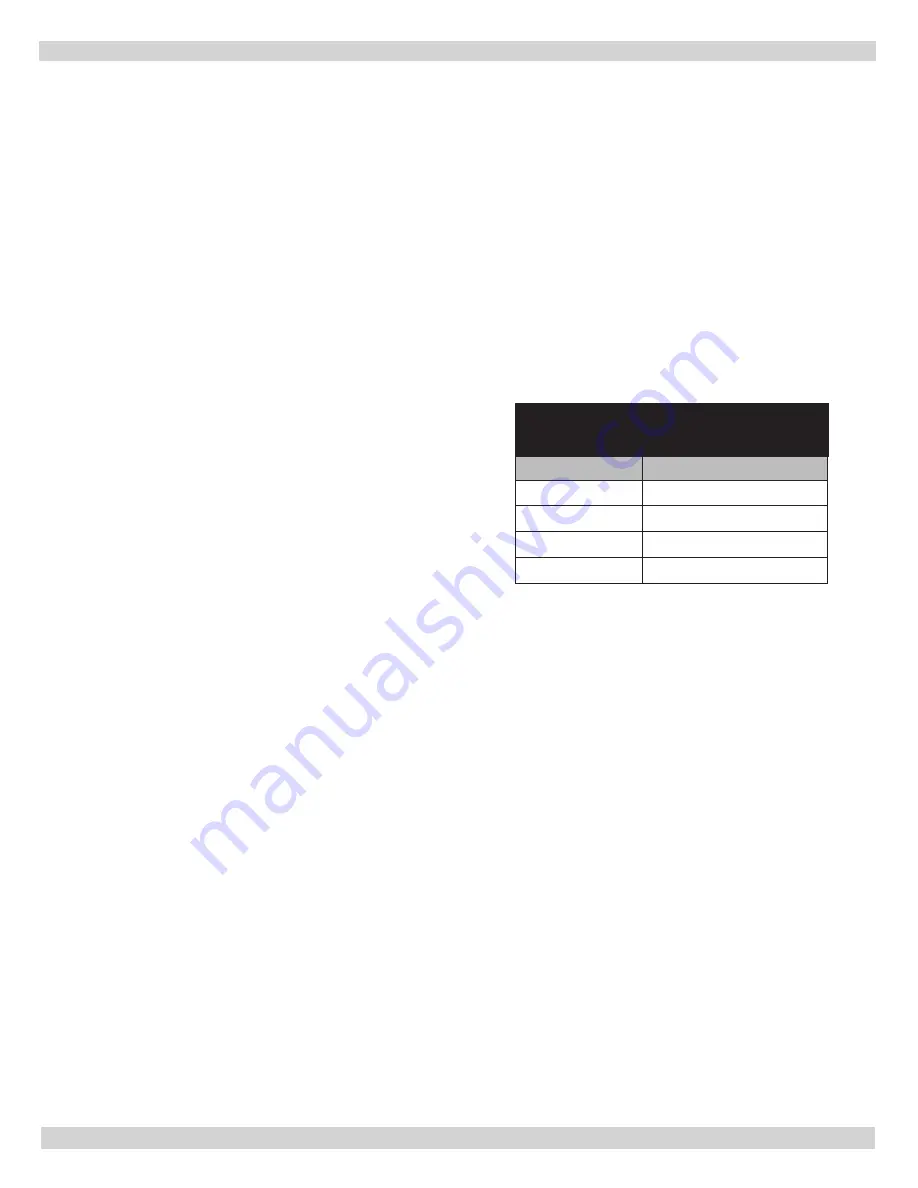
38
14.2 Chimney and Chimney Connector
1.
Chimney connector should be kept as short as possible.
Horizontal length of chimney connector should not be
greater than 10 feet.
2.
Type L Vent pipe or other suitable material may be
used for chimney connector if flue temperature is less
than 570° F.
3.
4,5 & 6 section boilers are equipped with a sheet metal
flue collar for attaching 5" diameter chimney connector.
Attach chimney connector to flue collar with 3 standard
sheet metal screws (field supplied).
4.
7 section boilers are equipped with a cast iron flue
collar for attaching 6" diameter chimney connector.
Attach chimney connector to flue collar using furnished
drill bit to drill holes for furnished screws. Vent
Connection Kit (drill bit and screws) furnished in
accessory carton. Predrill to avoid cracking cast iron
flue collar.
5.
Canadian installations require blocked vent safety
switch, included in accessory carton. Refer to separate
instruction sheet for installation. Install on boiler flue
collar prior to installing chimney connector.
6.
Canadian installations require blocked vent safety
switch, included with boiler. Refer to separate
instruction sheet for installation. Install on boiler flue
collar prior to installing chimney connector.
7.
Inspect chimney and connector annually for signs of
debris and corrosion. Loose mortar at base of chimney
may be sign of condensate damage to chimney.
8.
Inspect base of chimney for any signs of seepage.
Discoloration may be a sign of chimney damage. Have
repaired immediately.
9.
Contact qualified service agent immediately to examine
damage and correct. Operation of damaged chimney
may cause venting failure and force flue gases into
living space.
10.
If chimney is to be re-lined, use recommendations in
NFPA31, Appendix E or CSA B139.
14.3 Draft
• Natural draft generated through chimney is dependent
on several factors including, chimney height,
temperature of flue gases, cross section area of
chimney, chimney wall insulation value, dilution air and
total volume of flue gases. Operate boiler for at least 5
minutes before measuring draft.
• Minimum Draft at Breech – Draft induced by the
chimney must create at least a neutral pressure of 0
(zero) inches water column (INWC) at breech. Slightly
negative (i.e. suction) pressure is preferred. Pressure
at breech cannot be positive since this could create
condition that allows flue gas by-products to escape
from draft regulator. Draft is to be measured up stream
of draft regulator. See Burner Specifications.
•
Over-fire Draft - Measure pressure at 1/4” NPT test port.
Three pass boilers have higher pressure drop than single
pass. Table 9 shows expected pressure drop between
over-fire and breech. Total pressure drop is difference
between over-fire draft and breech draft. For example,
if over-fire draft = 0.05 INWC and breech draft = - 0.05,
total pressure drop = 0.05 - (-0.05) = 0.10 INWC. See
Figure 33.
Table 9
-
Pressure Drop
Between
Over-Fire & Breech
Sections
Inches WC
4
0.04-0.06
5
0.05-0.08
6
0.09-0.16
7
0.07-0.16
14.4 Stack Temperature
1.
Higher stack temperature, greater amount of draft
generated. Lower stack temperature not only reduces
amount of draft created but also increases possibility
flue gases could condense in chimney connector or
stack.
2.
Consult NFPA 31 and CSA B139 for information for
appropriate choice of venting materials. Chimney may
have to be lined to create sufficient draft, or chimney
may have to be lined to prevent corrosion of masonry
chimney. Consult qualified service agency for chimney
requirements in your area.
3.
Baffles – Efficiency of boiler is based on insertion of flue
baffles supplied with 4,5 & 6 section units. Baffles are
installed in 3rd pass (two inner flueways). Refer to “8 -
Boiler Assembly” for baffle installation. Remove baffles
to increase stack temperature.
4.
Remove baffles if any signs of condensation in chimney
or chimney connector. Removing baffles may not
address condensation.
14 - CHIMNEY AND VENTING CONNECTIONS
PN 240013415 REV A [08/15/2021]
















































